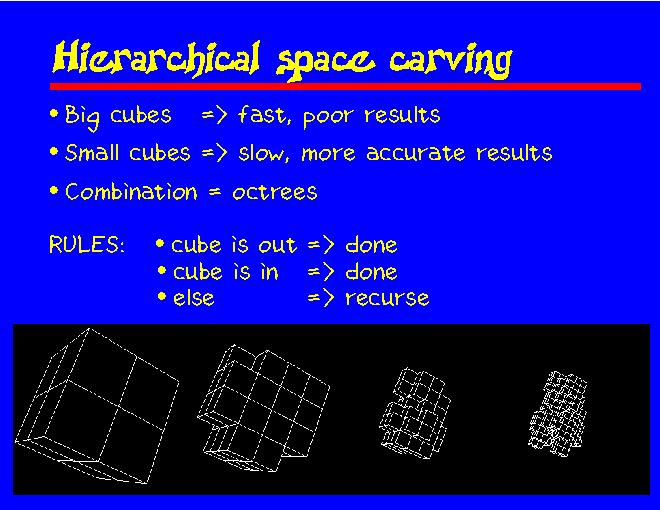Click slide for next, or goto previous, first, last slides or back to thumbnail layout.

Click slide for next, or goto previous, or back to thumbnail layout.
Click slide for next, or goto previous, first, last slides or back to thumbnail layout.

Click slide for next, or goto previous, or back to thumbnail layout.
It is not obvious how to choose the correct level of resolution for the cubes. If we choose large cubes, we get fast processing but poor results, and with small cubes the processing may just take too long.
Our solution was to use octrees and start with large cubes. If a cube is labelled either out or in, the processing stops there. In the boundary case the cube is subdivided into eight smaller cubes, and the cubes are recursively tested until the final level of subdivision. This way all the processing automatically concentrates close to the surface.
These images show the processing for the chair data set.